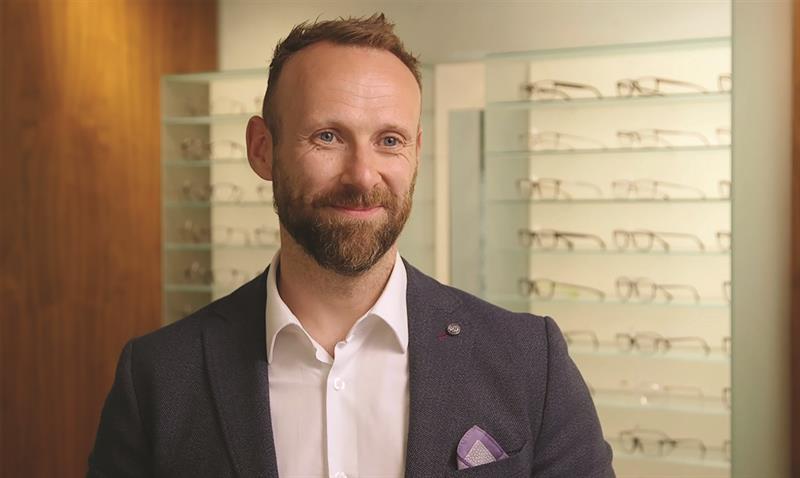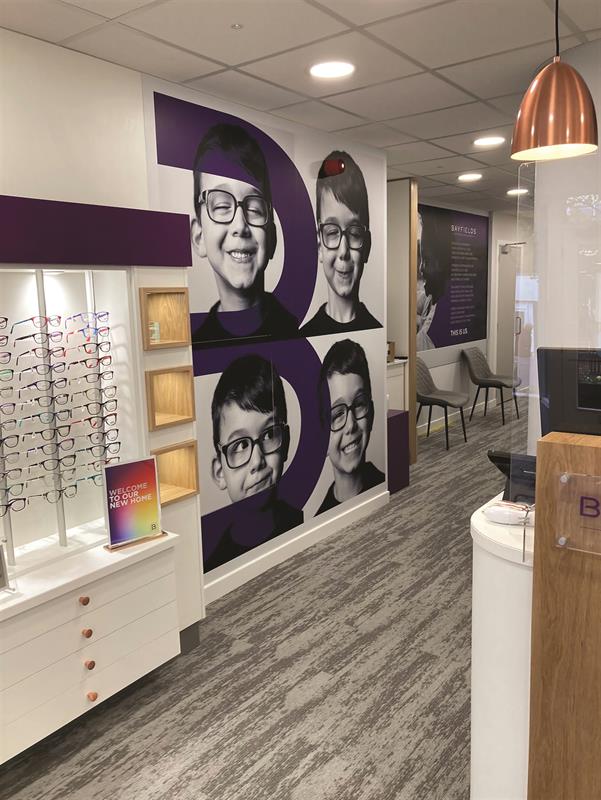
A goal has been set to perform a million eye and hearing examinations by Bayfields Opticians and Audiologists as part of its ambitious expansion plans.
The independent group wants to achieve this target by growing organically and through acquisitions, doubling the size of the business in the process.
In February, Bayfields acquired two practices in Yorkshire and one in London which took its total to 22, with 30 sites planned by the end of 2021 and 40 by 2023.
Royston Bayfield, the company’s founder and CEO, said that its one million examinations target was applied in order to stimulate growth and he referenced the use of a big, hairy, audacious goal (BHAG).
He told Optician the use of BHAG (pronounced bee-hag) was described by Jim Collins and Jerry Porras in their business book Built to Last: Successful Habits of Visionary Companies.
‘Those root appointments are how you improve people’s lives and that’s what we exist for. We want to do a million of those types of appointments,’ Bayfield said.
Having established itself as a small group of practices in Yorkshire, Bayfields started to expand when it purchased a practice in Surrey. Today, it operates more practices in the south than in the north of the country and expansion plans are nationwide.
 Royston Bayfield
Royston Bayfield
Bayfield explained: ‘What we do in terms of eye and hearing care examinations doesn’t work everywhere and I’m very conscious of that. We have to have the right demographics in the area for our model to work because it’s not a volume model in any way, shape or form.
‘It’s about taking lots of time with the individual. We’ve got a journey which we build around that concept. It’s a national rollout but we would not go anywhere. It’s got to be the right place in terms of fit and feel for our journey.’
Accelerating growth
Bayfields has been backed by investment company Business Growth Fund (BGF), which has financed its acquisition plan alongside profits generated by the independent group that are reinvested into the business.
BGF, which has previously backed Duncan & Todd in Scotland, formed a relationship with Bayfield before any formal agreement was made. This made it easier for Bayfield to select BGF as an investor because he was familiar with their ethos and culture of working.
As well as funding, BGF provided Bayfields with access and the ability to share knowledge with a network of other fast growing businesses in different sectors.
For its recent acquisitions, Bayfield explained that BGF funding was used to buy the businesses and then cashflow from Bayfields was used to refurbish the practices. He added that when a practice is purchased, its reputation and patient base was also acquired, which was easier for Bayfields than opening a completely new practice.
 Refurbishments at practices acquired by Bayfields include company branding
Refurbishments at practices acquired by Bayfields include company branding
Bayfield explained: ‘I think opening a new practice from scratch is really difficult to do. The way our industry works, both the optometry and the audiology side of it, the business is based on retaining patients over a period of time. If you’ve got a new start, you need an immense amount of footfall in order to get enough people through the door to make that business work.
‘If you want to position yourself in the market where we are positioned, you need to have really good looking, well-equipped practices and that increases your cost base from day one. So, if you don’t have enough people coming through the door, I think it’s a difficult model to work.’
Principles
Bayfield said the company was trying to create a brand that was focused on the lifestyle of its patients, understanding what that looks like and acknowledging that every patient is different.
‘We’ve built a business that is catered to that theory, ethos and those principles. In order to have a brand, you have to be a certain size. I don’t want us to be huge and competing with Specsavers, but I think you’ve got to have a certain amount of size to build a brand,’ Bayfield explained.
He added that he does not want the business to stand still, instead opting for constant development of the company and its workforce.
Practices that end up being acquired often approach Bayfields in the first instance and then analysis of whether it fits the company’s model would be completed.
‘I spend a lot of time talking to different practice owners, understanding them and their businesses. The reality is not all of them are going to work for us. We don’t buy lots and lots of practices. We buy what we think are the right practices for us, where we really want to make sure that when we buy something, that we can do something that’s going to add to it and grow it,’ Bayfield said.
Having those conversations and developing relationships was something Bayfield was proud of and believed would put the company in a good position in the future.
He added: ‘In my experience, the most important thing for somebody when they’re selling that business is that they understand what the incoming business is going to do. They’ve built it up, worked in it for years and want to see it move forwards in the right way. Often those relationships are about two parties getting to know each other and just seeing whether they think that practice will be right for that purchaser.’
Bayfield explained that even before the pandemic, he noticed an increase in the number of people who were looking for an improved work-life balance. ‘We’re seeing an increasing number of people deciding to sell, who’ve built something up but want the final part of their career to be slightly less pressure than running a practice. My personal view is that will probably accelerate because of Covid. I’ve certainly talked to a number of people during the pandemic who’ve just had enough, because it’s a hard balance between life, running a business and being in it all the time.’
All acquired practices will eventually be rebranded as Bayfields, which he said was dependent on the unique aspects of the practice and its location. ‘We have the same philosophy in every single practice, but we have a different set of services because every community requires something different. Also, sometimes you’re playing to the specialisms of the team as well.
‘We practise lifestyle optometry and audiology. That’s about determining the best solutions for an individual’s lifestyle. Every single thing we do in our business points at that one concept; all the training, product selection and practice locations. Also, our biggest asset is our culture and no other business, shop or office can copy another one’s culture.’
Independent feel
There comes a point during expansion where the lines between independent and multiple practice might become blurred, but Bayfield maintained that it was a group of independent opticians, despite its growth.
‘For me, being independent is about mindset. The other aspect, which is really important for us as a business, is family. We are a family business in terms of that family feel and we’re there to cater to families.
‘We won’t go past the point of where it starts to feel non-family and non-independent. I also understand that we’re different from a practice with one or two sites. I fully appreciate that but we still have that independent mindset.’
Bayfield acknowledged that the independent and multiple sides of the profession do great things. ‘The processes, structures and development opportunities of the big guys are phenomenal and then you’ve got the heart and soul of the independent. What we are striving to do is take the best of both and try to sit somewhere in the middle between those two,’ he explained.
The company was open to tailored training opportunities to each of its practitioners and hosted regular training events for the entire practice team. Bayfield said that managers within the business acted as coaches in order to help with the professional development of their colleagues in practice. ‘Having that ethos running through our business really can accelerate an individual’s learning and development. When you get leadership working well, you can do some really good things. Leadership’s job is to bring everybody together and get them working in one direction,’ he added.
The next steps for Bayfields were focused on continued discussions with practices that could be acquired and adapting to delivering services post-pandemic.
Bayfield explained: ‘We’re talking to people in terms of acquiring practices and we’ve got a number of practices that we are proceeding through a process to acquire.
‘The second aspect is coming out of lockdown. Following the roadmap out of Covid will take an awful lot of effort for people to do and to do correctly because we’re taking everybody on a journey.’
He added that even a simple question of when to unlock the door of a practice again will take a considerable amount of planning, energy and effort to ensure staff feel comfortable.
‘They’ve be working in a practice now for a year with a locked door. The PPE that we all wear, will that ever go? Will we have to refine our journeys again? The reality is we have probably all as an industry put in what we think is a temporary modified journey. What aspects of that are going to stay and what aspects are going to go?’ he concluded.
